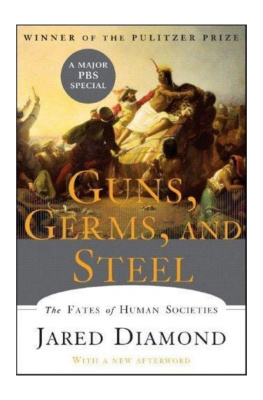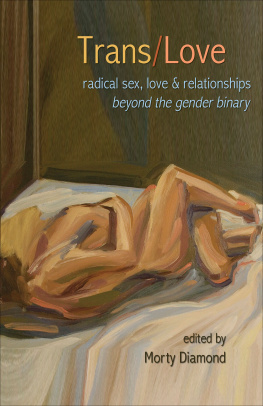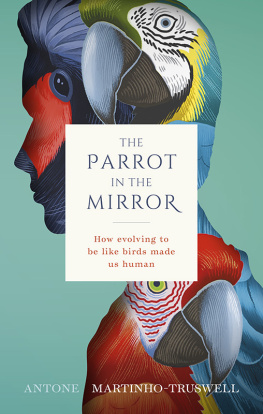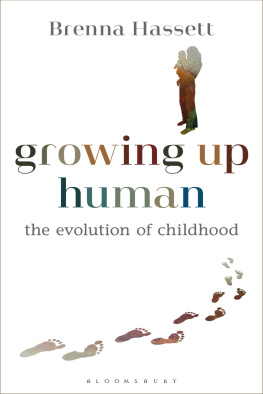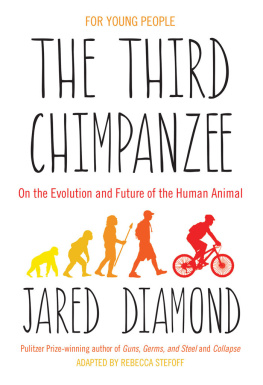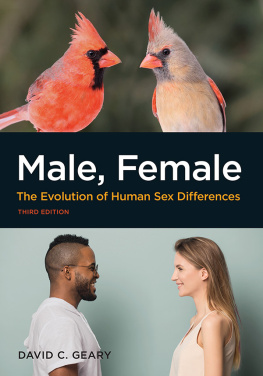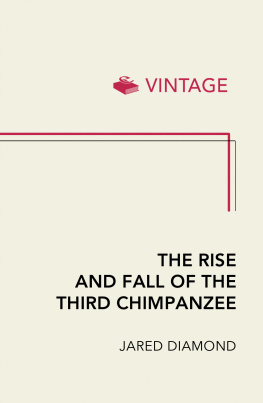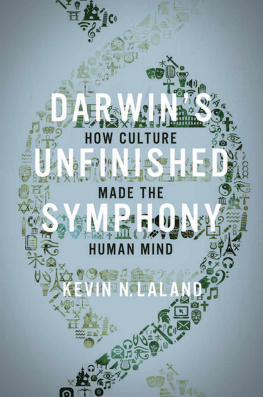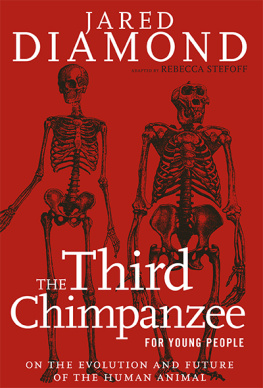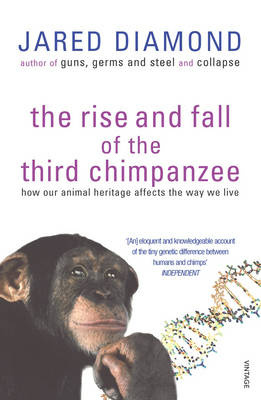WHY IS SEX FUN?
WHY IS SEX FUN?
The Evolution of Human Sexuality
JARED DIAMOND


A Member of the Perseus Books Group
The Science Masters Series is a global publishing venture consisting of original science books written by leading scientists and published by a worldwide team of twenty-six publishers assembled by John Brockman. The series was conceived by Anthony Cheetham of Orion Publishers and John Brockman of Brockman Inc., a New York literary agency, and developed in coordination with Basic Books.
The Science Masters name and marks are owned by and licensed to the publisher by Brockman Inc.
Copyright 1997 by Jared Diamond.
Published by Basic Books,
A Member of the Perseus Books Group.
All rights reserved. No part of this book may be used in any manner whatsoever without written permission except in the case of brief quotations embodied in critical articles and reviews. For information, address Basic Books, 387 Park Avenue South, New York, NY 10016-8810.
Library of Congress Cataloging-in-Publication Data
Diamond, Jared M.
Why is sex fun? : the evolution of human sexuality / by Jared Diamond. 1st ed.
p. cm.
Includes index.
ISBN-10 0-465-03127-7 (cloth)
ISBN-13 978-0-465-03127-6 (cloth)
ISBN-10 0-465-03126-9 (paper)
ISBN-13 978-0-465-03126-9 (paper)
1. Sex. 2. Sex customs. I. Title.
HQ21.D48 1997 |
306.7DC21 | 96-44065 |
CIP |
EBC 06 07 08 09 27 26 25 24 23 22 21 20 19
To Marie,
My best friend, coparent, lover, and wife
CONTENTS
Why Dont Men Breast-feed Their Babies?
The Non-Evolution of Male Lactation
Wrong Time for Love:
The Evolution of Recreational Sex
What Are Men Good For?
The Evolution of Mens Roles
Making More by Making Less:
The Evolution of Female Menopause
Truth in Advertising:
The Evolution of Body Signals
T he subject of sex preoccupies us. Its the source of our most intense pleasures. Often its also the cause of misery, much of which arises from built-in conflicts between the evolved roles of women and men.
This book is a speculative account of how human sexuality came to be the way it now is. Most of us dont realize how unusual human sexual practices are, compared to those of all other living animals. Scientists infer that the sex life of even our recent apelike ancestors was very different from ours today. Some distinctive evolutionary forces must have operated on our ancestors to make us different. What were those forces, and what really is so bizarre about us?
Understanding how our sexuality evolved is fascinating not only in its own right but also in order to understand our other distinctively human features. Those features include our culture, speech, parent-child relations, and mastery of complex tools. While paleontologists usually attribute the evolution of these features to our attainment of large brains and upright posture, I argue that our bizarre sexuality was equally essential for their evolution.
Among the unusual aspects of human sexuality that I discuss are female menopause, the role of men in human societies, having sex in private, often having sex for fun rather than for procreation, and the expansion of womens breasts even before use in lactation. To the layperson, these features all seem almost too natural to require explanation. On reflection, though, they prove surprisingly difficult to account for. Ill also discuss the function of mens penises and the reasons women but not men nurse their babies. The answers to these two questions seem utterly obvious. Within even these questions, though, lurk baffling unsolved problems.
Reading this book will not teach you new positions for enjoying intercourse, nor will it help you reduce the discomfort of menstrual cramps or menopause. It will not abolish the pain of discovering that your spouse is having an affair, neglecting your joint child, or neglecting you in favor of your child. But this book may help you understand why your body feels the way it does, and why your beloved is behaving the way he or she is. Perhaps, too, if you understand why you feel driven to some self-destructive sexual behavior, that understanding may help you to gain distance from your instincts and to deal more intelligently with them.
Earlier versions of material in some chapters appeared as articles in Discover and Natural History magazines. It is a pleasure to acknowledge my debt to many scientist colleagues for discussions and comments, to Roger Short and Nancy Wayne for their scrutiny of the whole manuscript, to Ellen Modecki for the illustrations, and to John Brockman for the invitation to write this book.
THE ANIMAL WITH
THE WEIRDEST SEX LIFE
I f your dog had your brain and could speak, and if you asked it what it thought of your sex life, you might be surprised by its response. It would be something like this:
Those disgusting humans have sex any day of the month! Barbara proposes sex even when she knows perfectly well that she isnt fertilelike just after her period. John is eager for sex all the time, without caring whether his efforts could result in a baby or not. But if you want to hear something really grossBarbara and John kept on having sex while she was pregnant! Thats as bad as all the times when Johns parents come for a visit, and I can hear them too having sex, although Johns mother went through this thing they call menopause years ago. Now she cant have babies anymore, but she still wants sex, and Johns father obliges her. What a waste of effort! Heres the weirdest thing of all: Barbara and John, and Johns parents, close the bedroom door and have sex in private, instead of doing it in front of their friends like any self-respecting dog!
To understand where your dog is coming from, you need to free yourself from your human-based perspective on what constitutes normal sexual behavior. Increasingly today, we consider it narrow-minded and despicably prejudiced to denigrate those who do not conform to our own standards. Each such form of narrow-mindedness is associated with a despicable ismfor instance, racism, sexism, Eurocentrism, and phallocentrism. To that list of modern ism sins, defenders of animal rights are now adding the sin of species-ism. Our standards of sexual conduct are especially warped, species-ist, and human-centric because human sexuality is so abnormal by the standards of the worlds thirty million other animal species. Its also abnormal by the standards of the worlds millions of species of plants, fungi, and microbes, but Ill ignore that broader perspective because I havent yet worked through my own zoo-centrism. This book confines itself to the insights that we can gain into our sexuality merely by broadening our perspective to encompass other animal species.
As a beginning, lets consider normal sexuality by the standards of the worlds approximately 4,300 species of mammals, of which we humans are just one. Most mammals do not live as a nuclear family of a mated adult male and adult female, caring jointly for their offspring. Instead, in many mammal species both adult males and adult females are solitary, at least during the breeding season, and meet only to copulate. Hence, males do not provide paternal care; their sperm is their sole contribution to their offspring and to their temporary mate.
Even most social mammal species, such as lions, wolves, chimpanzees, and many hoofed mammals, are not paired off within the herd/pride/pack/band into male/female couples. Within such a herd/pride/et cetera, each adult male shows no signs of recognizing specific infants as his offspring by devoting himself to them at the expense of other infants in the herd. Indeed, it is only within the last few years that scientists studying lions, wolves, and chimpanzees have begun to figure out, with the help of DNA testing, which male sired which infant. However, like all generalizations, these admit exceptions. Among the minority of adult male mammals that do offer their offspring paternal care are polygynous male zebras and gorillas with harems of females, male gibbons paired off with females as solitary couples, and saddleback tamarin monkeys, of which two adult males are kept as a harem by one polyandrous adult female.






